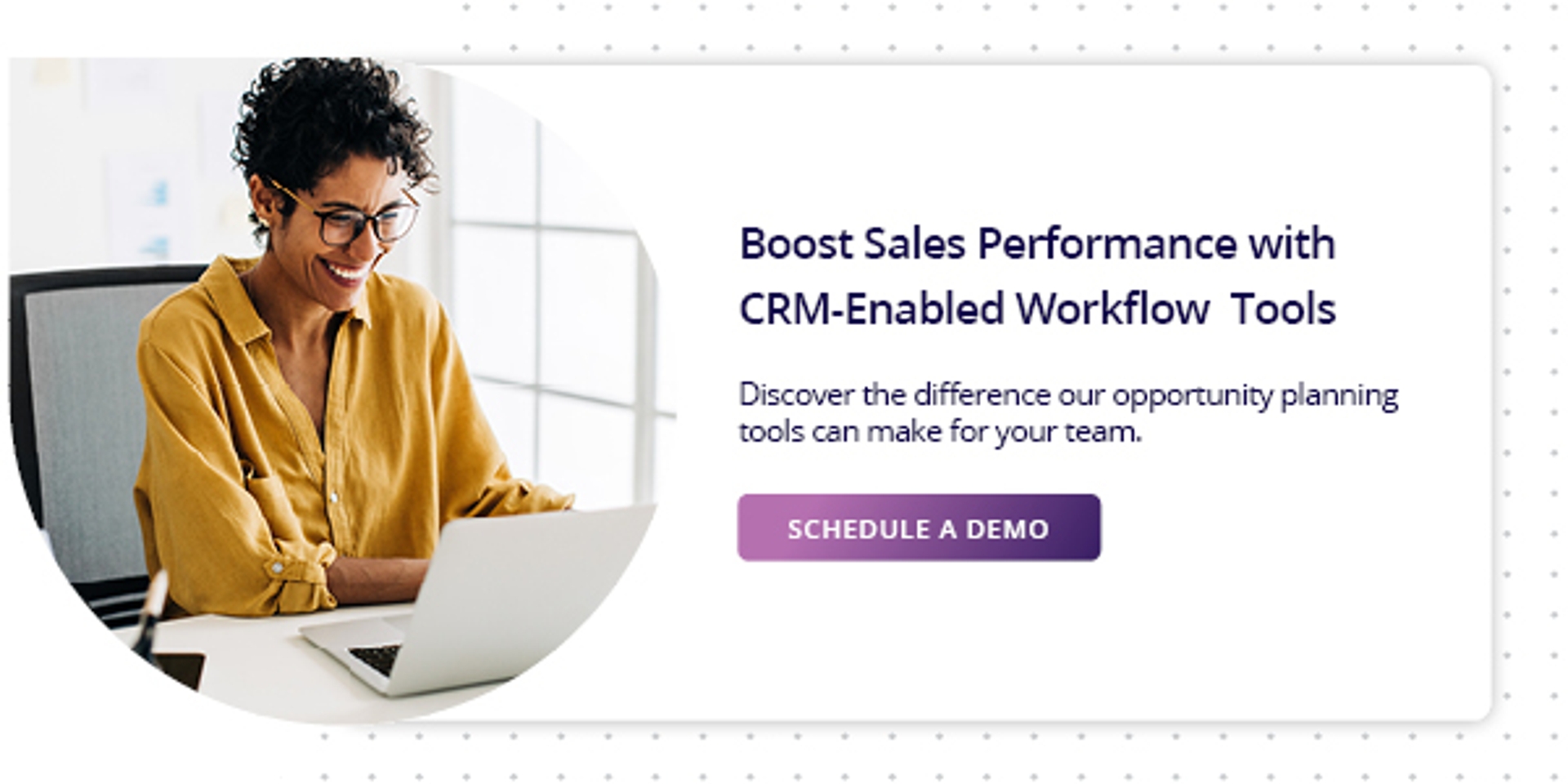
Account and Opportunity Planning CRM-Enabled Workflow Tools
Ensure your sales team applies the right skills at the right moment to win the sale and drive revenue.
Help Your Team Keep Up with the Pace of Selling
In today’s fast-changing world, sales professionals need the right combination of skills and tools to identify opportunities, plan strategic accounts and build relationships. We support our clients beyond the classroom by offering tools that seamlessly integrate into your existing CRM workflow to enable sellers to apply the skills they’ve learned, adapt to the needs of buyers and close more deals.
Apply Sales Skills in the Natural Flow of Work
Many organizations invest heavily in sales training and development only to see their sales teams revert to old habits.
Richardson Accelerate CRM workflow tools address this by embedding best practices, learned skills and in-the-moment coaching into the natural flow of work.
Our tools build a practical bridge from sales training to the real-world by bringing the strategies and tactics sellers learn in our training programs into their everyday activities. Our tools are simple, yet powerful, and help ensure new skills lead to real results.

Brief: Driving CRM and Sales Enablement Success
Download

Opportunity Planning Tools
Our opportunity planning tools integrate directly into your CRM to allow your sales team to apply the skills they’ve learned to target, pursue and close potential deals more effectively.
Learn More About Accelerate: Opportunity Planning ToolsAccount Planning Tools
Richardson's Prosperous Account Strategy Tool is a Salesforce native application that helps account managers build relationships, improve retention and grow revenue in key accounts.
Learn about our Prosperous Account Strategy Program: Account Planning Tools.png?ixlib=gatsbySourceUrl-2.0.2&auto=format%2Ccompress&w=1280&h=720&s=c89f93b7c141a2254f15739753e0125c)

Score Opportunities
Our Opportunity Health tool offers unbiased evaluations of an opportunity, helping guide sellers’ strategies and allowing managers to easily track deal progress.
The tool ensures sellers base decisions on facts – not just a gut feeling – by objectively scoring an opportunity based on 5 key factors (or Opportunity Vitals): pain, power, vision, value and consensus.
As taught in our Sprint Selling™ program, Opportunity Vitals help sellers identify and focus on the activities that will truly advance the sale. We integrate this assessment into your CRM workflow to visually display progress in each area and provide custom recommendations and coaching tips in the moment to help sellers uncover risks, identify their next steps and reach their targets more effectively.
Plan Your Call
Once a seller is clear on their strategy and next steps, the Call Planner gives them the tools to move through each customer interaction with confidence. The tool supports them through every step of a call from setting an objective to detailing how they will kick off the meeting, resolve objections and secure a commitment to next steps.
The Call Planner lets you collaborate with your team to align on desired call outcomes that can be measured against and used to evaluate the success of each customer interaction.
Reflect and Coach
After completing a call, the Reflect tool provides a step-by-step breakdown of the seller’s performance to assess where they were successful, the ways they can improve in the future and what they need to do to prepare for their next customer interaction.
Sales leaders can leverage these insights to:
- Determine if meeting outcomes were achieved as planned
- Track how sellers are advancing a sale over time
- Identify Opportunities for further training and coaching
Account Planning Tool
The Prosperous Account Strategy Tool is a highly visual and collaborative application supports all phases of the account planning process as taught in our Prosperous Account Strategy Training, from understanding accounts and analyzing performance to planning and delivering the right solution to the right customer.
- Account Performance: Analyze account revenue year over year to determine additional opportunities to reach revenue targets
- Product Mix: Record which solutions have been sold within the account to identify best-selling products or areas for expansion through cross-selling, up-selling or new opportunities
- Assess Stakeholders: View the account’s organizational hierarchy to better understand relationships between stakeholders, their lines of reporting, the influences they have over each other, your levels of access, and where there are strengths and weaknesses in your relationships
- Issues & Initiatives: Capture the strategic initiatives for an account to identify opportunities to create value and ensure your strategy supports the account’s goals
- Strategy & Action Planning: Develop a comprehensive strategy by recording the account’s strategic objectives, potential opportunities, and the actions and resources needed to achieve those objectives
- Dashboards and Reporting: Visualize the impact account planning has on your business with an interactive dashboard and robust suite of reports
Connect Sales Skills to Real-world Outcomes
Richardson's CRM Workflow tools provide real-time insights into how sellers are channeling new skills into real sales opportunities, growth in accounts, and closed deals.
- Revenue: Generate more revenue and tie sales training and coaching to earnings
- Insights: Gain measurable insights into how sellers are applying the skills they’ve learned
- Consistency: Ensure consistency in your sales process and that sellers are following best practices
- Coaching: Identify areas for continued coaching and training to improve sales execution
It's time to make real change happen.
Let's talk about the real-world challenges your team is facing and the outcomes you want them to achieve. Call us at 215-940-9255 or complete the form below to connect with the Richardson team.








.png?ixlib=gatsbySourceUrl-2.0.2&auto=format%2Ccompress&w=1200&h=627&s=323eb9f3d6bbf00f47ce1bbf34056978)
